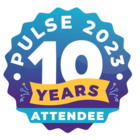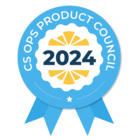In this Spotlight  article we are fortunate to host Matthew Lind who has worked in CS Ops managing Gainsight for organizations including IBM, Splunk, and Auctane. Matthew Lind (matthew_lind) is also the lead author for the Customer Success Operations learning path on Gainsight’s Pulse+ platform.
article we are fortunate to host Matthew Lind who has worked in CS Ops managing Gainsight for organizations including IBM, Splunk, and Auctane. Matthew Lind (matthew_lind) is also the lead author for the Customer Success Operations learning path on Gainsight’s Pulse+ platform.
We asked Matthew to share some wisdom from his vast experience with the community and he responded very enthusiastically with some deep, insightful responses. Take a moment to check out Part 1 below and stay tuned for Part 2 coming soon!
Thank you Matthew and cheers to you and the rest of our community of admins! 

What's your story of how you became a Gainsight Admin? If you had to do it all over again, is there anything you'd do differently?
I deployed Gainsight for the first time in 2015 (gasp!). This was a world in which Journey Orchestrator, Timeline and Data Designer didn't exist, and you had to install Gainsight as a SFDC managed package. At the time, I did a lot of cross-functional work, so I had healthy relationships with the Salesforce team, the Support team, the Product team, and could pull together all those data points for our Customer Success team, planting them inside Gainsight.
Happily, I wouldn't do a lot differently. However, believing there is always something we can improve, there are two things I practice now that I was not practicing heavily then:
- Being transparent. When we come asking for product telemetry or a lot of Salesforce data, we have a responsibility to credibly share what we're going to do with that data. Most folks are very willing to share when they understand your goals and outcomes. Don't try to sneak data or processes into CS Ops in a dark or suspicious way; just be authentic and transparent with what you're about.
- Linking to business outcomes. Inside a platform like Gainsight, it's easy to get lost in the configuration, the sync, the rule that just won't run. Lift up your head and remember WHY you're doing this, and what business outcomes you're pointed towards. That will give you perspective to keep going, and also will help you navigate into great solutions when you feel blocked.
What is the best piece of advice you've either heard or shared around this role?
- What end problem are you solving for, and what business outcome does this align to? If those questions have vague answers, consider pausing and asking for clarity. We never build Gainsight functionality for the sake of having more Gainsight functionality. We build so that we can more easily identify advocates, or so we that we can spot growth opportunities more readily, or so that we can document and analyze risk more thoroughly. Keep talking to your stakeholders until you understand that business outcome they seek, then use your expertise to build the most ideal solution to take you there. This practice has an amazing by-product of elevating you past a transactional order-taker, and into a thought leader and brainstorming partner.
- How durable is this workflow? How much effort will go into building it, and also maintaining it, as your organization continues to change? You might build an amazing workflow, but if that workflow is "brittle"--that is, it can't be amended easily when you experience a re-segmentation or a new product line or a re-assignment of CSMs--then consider what other ways you might get to a solution.
As the creator of the CS Ops training on the Gainsight Pulse+ platform, what motivated you to develop that content? Anything else you might want to share to expand on this?









